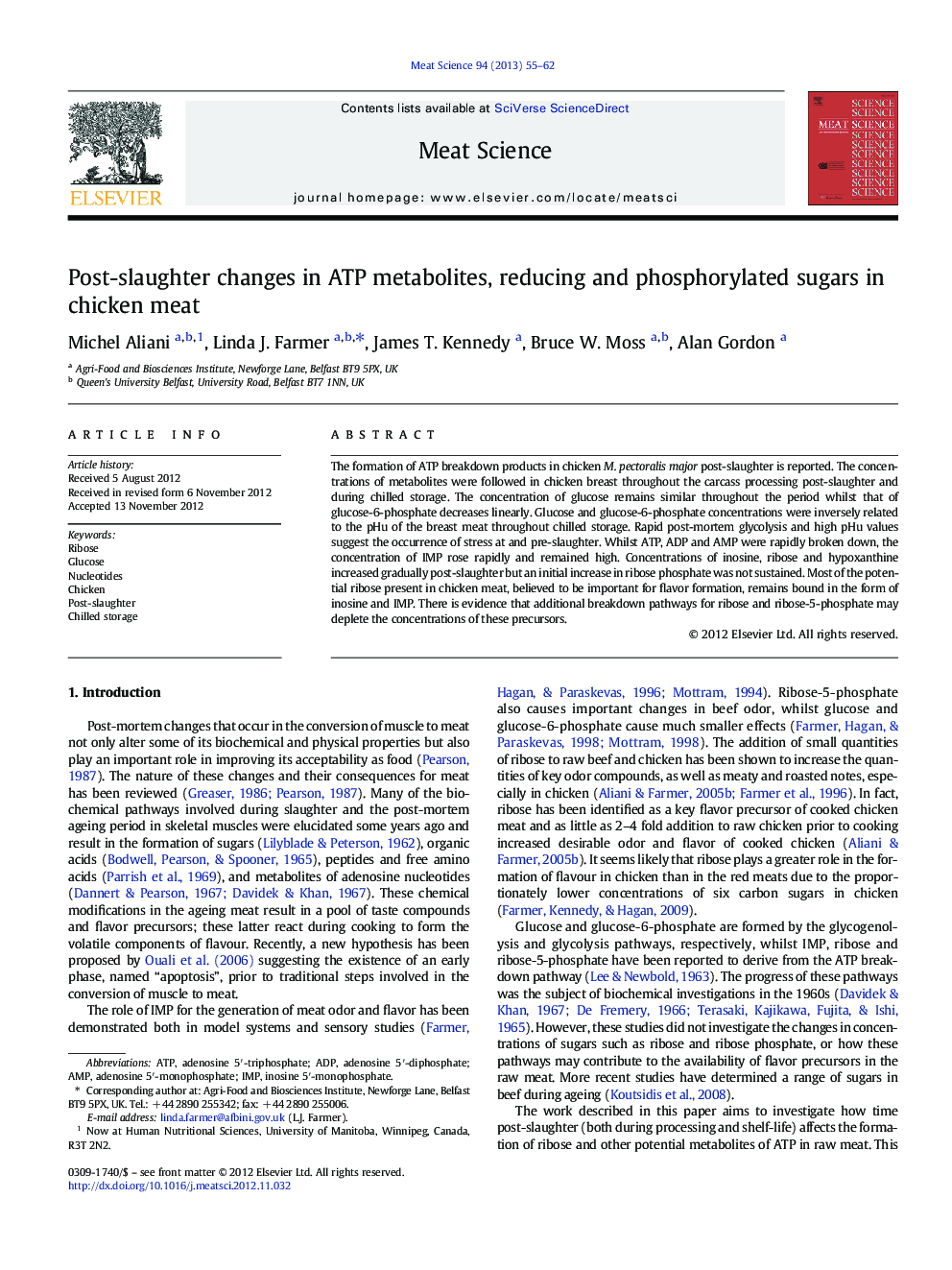| Article ID | Journal | Published Year | Pages | File Type |
|---|---|---|---|---|
| 5792379 | Meat Science | 2013 | 8 Pages |
The formation of ATP breakdown products in chicken M. pectoralis major post-slaughter is reported. The concentrations of metabolites were followed in chicken breast throughout the carcass processing post-slaughter and during chilled storage. The concentration of glucose remains similar throughout the period whilst that of glucose-6-phosphate decreases linearly. Glucose and glucose-6-phosphate concentrations were inversely related to the pHu of the breast meat throughout chilled storage. Rapid post-mortem glycolysis and high pHu values suggest the occurrence of stress at and pre-slaughter. Whilst ATP, ADP and AMP were rapidly broken down, the concentration of IMP rose rapidly and remained high. Concentrations of inosine, ribose and hypoxanthine increased gradually post-slaughter but an initial increase in ribose phosphate was not sustained. Most of the potential ribose present in chicken meat, believed to be important for flavor formation, remains bound in the form of inosine and IMP. There is evidence that additional breakdown pathways for ribose and ribose-5-phosphate may deplete the concentrations of these precursors.
⺠ATP breakdown products and glucose were monitored in chicken post-slaughter. ⺠ATP, ADP and AMP were rapidly broken down while IMP increased rapidly. ⺠Glucose and G6P were inversely related to the pHu of the breast meat. ⺠Most ribose, an important flavor precursor, remains bound in inosine and IMP.
